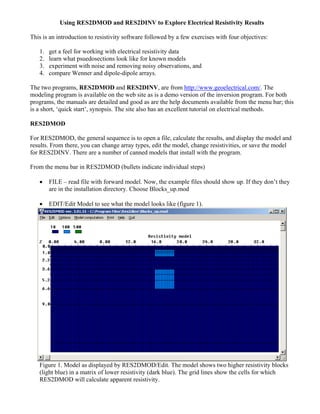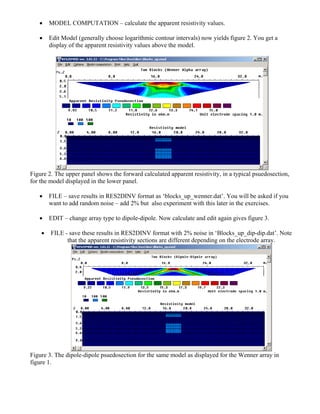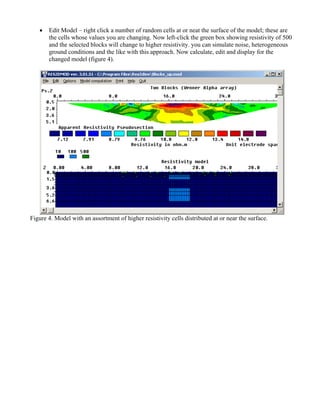This document provides an introduction and overview of using the RES2DMOD and RES2DINV software programs to model and invert electrical resistivity data. It walks through exercises using known block models to generate synthetic resistivity data using different electrode arrays, adding noise, and inverting the data to recover the models. The objectives are to become familiar with resistivity data, understand how different arrays produce different pseudosections, experiment with noise removal, and compare inversion results. Figures generated during the exercises are included to demonstrate the modeling, inversion, and editing capabilities of the software.






